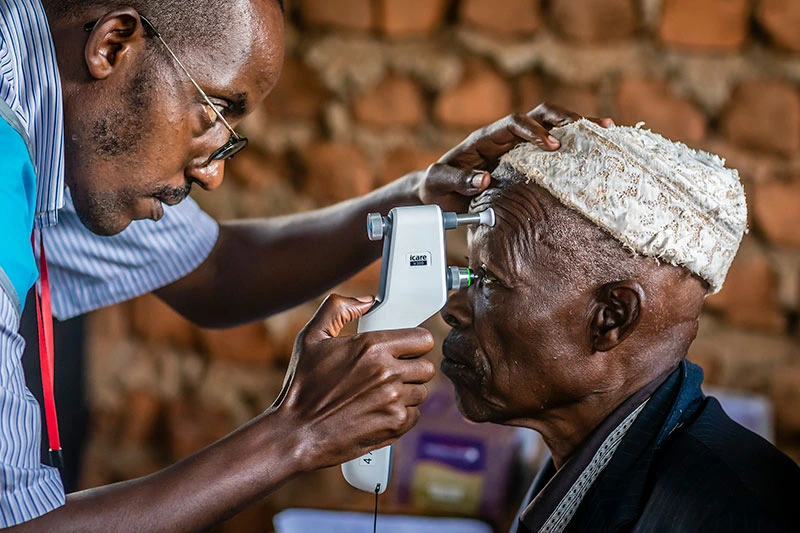Author's details
- Dr. Khashau Eleburuike
- MBBS (Ilorin) MSc. Global Health Karolinska Institute.
- Resident doctor in family medicine in Northern Sweden.
Reviewer's details
- Dr Odukanmi Oluronke
- B.SC, MBBS, MPH (Ilorin), Fellow West African College of Surgeon (Ophthalmology)
- Consultant Ophthalmologist, Kwara State Specialist Hospital; Alagbado.

- Date Published: 1741651200
- Date Updated: 1741651200
Glaucoma for patients in Sub-Saharan Africa
What is Glaucoma?
Glaucoma is a group of eye conditions that damage the optic nerve, which is essential for vision. This damage is often caused by increased pressure in the eye (intraocular pressure). If left untreated, glaucoma can lead to permanent vision loss or blindness. It is one of the leading causes of blindness in sub-Saharan Africa.
- Open-Angle Glaucoma: The most common type, which develops slowly over time and often has no early warning signs.
- Angle-Closure Glaucoma: This type can occur suddenly and is a medical emergency, requiring immediate attention.
- Increased Eye Pressure: The main cause, often due to a buildup of fluid inside the eye.
- Age: People over 40 are at higher risk.
- Family History: Glaucoma tends to run in families.
- Previous Eye Injury or certain eye conditions can increase the risk.
- Poor Access to Eye Care: Limited access to regular eye check-ups increases the risk of undiagnosed glaucoma.
Glaucoma often has no symptoms in its early stages, making regular eye exams crucial. As the disease progresses, symptoms may include:
- Gradual Loss of Peripheral Vision (side vision)
- Blurred Vision
- Seeing Halos Around Lights
- Severe Eye Pain, Headache, or Nausea (in cases of angle-closure glaucoma)
- Sudden Vision Loss (in advanced stages)
- Diagnosis: A healthcare provider can diagnose glaucoma through eye pressure tests and examining the optic nerve.
- Treatment: There is no cure for glaucoma, but early treatment can help control the disease and prevent further vision loss. Treatment options include:
- Eye Drops: To reduce eye pressure.
- Laser Therapy or Surgery: In some cases, surgery may be needed to relieve eye pressure.
- Regular Eye Check-Ups: Especially if you are over 40 or have a family history of glaucoma. Many local clinics and outreach programs offer free or low-cost screenings.
- Manage Existing Conditions: If you have diabetes or high blood pressure, managing these conditions can help reduce your risk of glaucoma.
- Protect Your Eyes: Use protective eyewear in environments where eye injuries are possible.
- Eye Clinics and Hospitals: Many hospitals offer glaucoma screening and treatment. Some areas have mobile eye clinics that visit rural communities.
- Outreach Programs: Look out for health outreach programs offering eye exams, especially if you’re in a remote area.
Avoid Traditional Remedies: Traditional treatments are not effective for glaucoma and may delay proper care, leading to vision loss. Always seek medical advice from a trained healthcare provider.
Glaucoma is a silent vision thief, but with early detection and treatment, you can protect your eyesight. Regular eye check-ups and timely treatment can slow down or prevent vision loss caused by glaucoma. If you notice any changes in your vision, seek medical attention as soon as possible.
- Schuster AK, Erb C, Hoffmann EM, Dietlein T, Pfeiffer N. The diagnosis and treatment of glaucoma. Deutsches Ärzteblatt International. 2020 Mar;117(13):225.
- Weinreb RN, Aung T, Medeiros FA. The pathophysiology and treatment of glaucoma: a review. Jama. 2014 May 14;311(18):1901-11.
- McMonnies CW. Glaucoma history and risk factors. Journal of optometry. 2017 Apr 1;10(2):71-8.
